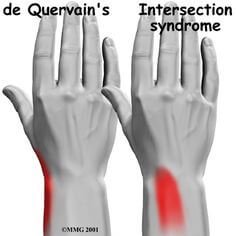Relieving Symptoms of Tendonitis With Chiropractic Therapy
By Dr Jeremy Portmann
Whether it be tennis elbow, runner’s knee, or jumper’s knee, all these conditions point to tendonitis: a fibrous tissue inflammation that connects the muscles to the bone, causing movement restriction and resulting pain. Often, athletes (casual or not) are likelier to develop tendonitis simply because of their partaking in repetitive activities. Computer programmers and typists are also prone to wrist tendonitis due their repetitive keyboard use. Similarly, pianists may also be afflicted with the same problem.
Traditional medicine has often relied on treatments that merely address the symptoms, such as cortisone injections. However, steroids and anti-inflammatories only mask the symptoms of a problem that will return the moment the injections stop. They also bring about myriad side effects. Anti-inflammatories often results in stomach and intestinal pain. In fact, more than a third of people on anti-inflammatory drugs report gastrointestinal pain.
Causes of Tendonitis
- In the majority of cases, tendonitis is due to strain of repetitive movements. Strain can also be due to too much stress placed on the tendons from improper or imbalanced exercise routines.
- Aging. As the body ages, tendons harden and lose some of their elasticity. This translates into joint inflexibility.
- Injury. Occasionally, tendonitis develop following another tendon or joint injury. In such cases, tendonitis may develop because the injury has not fully healed.
- Other conditions, such as rheumatoid arthritis, can cause tendonitis as a result of unusual pressure or strain on the tendons.
- Thermal injury. Occasionally, thermal injury can bring about tendonitis, affecting the hands, wrists, and feet. Rock climbers and hikers sometimes report thermal injuries.
Symptoms of Tendonitis
- Pain when the tendon is under pressure. Pressure can come from weight lifting, playing tennis, or any type of manual job (such as typing).
- Movement restriction without pain.
- Pain, swelling, or stiffness to the affected area.
- Restricted movement in a specified area. For example, someone with tendonitis in the bicep may not be able to move the arm fully.
- Pain to the affected area when touched or moved. As tendonitis progresses, pain may occur irregardless of whether the tendon is under pressure or not. In such cases, pain may occur as a result of the area being merely touched.
- A burning sensation around the affected area. Or, in more serious cases, the area becomes swollen, red, warm or “lumpy” as a result of accumulation of fluid and inflammation.
Tendonitis Treatment
- Stop the activity that is causing the pain, resting the the affected area for at least 3 weeks. After a period of rest, the tendon will likely be able to heal itself.
- Mobilize the area, if possible, with braces.
- As part of rehabilitative exercises, gentle stretching and strengthening exercises will help restore tendon mobility. Contact a chiropractic doctor for precise advice on the proper type of exercises to perform. You will also receive advice of warming up techniques that can decrease the risk of muscle strain.
- Employ massage therapy. Massage therapy helps ease the pain of tendonitis and may help recovery. Your chiropractic doctor will know of an appropriate massage approach for your condition.
- As part of a healthy, calcium-rich diet for healthy bones, make sure to eat fruit, fresh vegetables, seeds, and nuts. Aim to include salmon, tofu, sardines, and grains in your regular diet. In addition, including a cup of yogurt and another glass of low-fat or skim milk can add precious milligrams to your daily calcium intake.
- Ice therapy. Ice therapy may help alleviate pain or reduce swelling.
- Ultrasound treatment. The use of ultrasound may help break down scar tissue around the tendon, increasing circulation and softening the affected area. It may also help with the pain.
Contact Your Chiropractic Doctor
Doctors of chiropractic are licensed experts familiar with the diagnosis and treatment of tendonitis. With an adequate recovery approach, your tendons will improve or altogether recover from its present impairment. Studies show that chiropractic care is one of the most helpful therapeutic approaches for a variety of conditions. Your chiropractic doctor has many tools to help address your pain and discomfort.
The Dallas Chiropractor serves patients with Health Services and Dallas Therapy treatments.
Article Source: //EzineArticles.com/?expert=Dr_Jeremy_Portmann
//EzineArticles.com/?Relieving-Symptoms-of-Tendonitis-With-Chiropractic-Therapy&id=5345175


